Traction control is a method used in vehicles to stop the drive wheels from spinning. The drive wheels are the wheels that are powered by the motor. Traction control serves two main purposes:
- Stop the driver losing control
- Reduce unnecessary tyre wear
It makes for smoother and more consistent acceleration on slippery surfaces but it can’t create traction where there isn’t any.
How does a vehicle break traction?
If too much power is fed to the wheels, the turning force can overcome the grip available on the road. Road surfaces vary in the amount of friction they have available from rough and grippy (e.g. new asphalt), to sheen and slippery (e.g. ice or wet, painted white lines) or loose and slippery (e.g. gravel).
If a vehicle is two-wheel drive (i.e. either the front wheels or the rear wheels propel it) and one wheel starts spinning, it will continue spinning because of the differential – this means that a vehicle that is two-wheel drive effectively only has one wheel doing the driving. You can see this really easily if you pull 90-degrees out of a side road with a reasonable amount of power – the inner wheel will spin because as the vehicle turns a corner, weight is transferred to the outside of the curve, meaning the inside wheels have less contact with the road surface and are more likely to spin when power is applied.
In a four-wheel drive vehicle, you essentially have one front wheel and one rear wheel powering the vehicle, unless there’s a limit slip differential at the rear, in which case it will (at best) be three-wheel drive.
What happens if your wheels start spinning?
Rear-wheel drive
- Straight line: the rear will move in the direction of any slope in the road. It might fishtail if grip is alternated between the sides due to the road surface
- Cornering: the rear of the vehicle will swing out towards the outside of the bend
- Motorbikes: you’re likely to end up in a high-side accident
- Trucks: if you are already moving and you are pulling a semi-trailer, there’s a risk of jack-knifing
Front-wheel drive (cars only)
- Straight line: the front will pull to one side
- Cornering: steering won’t work and you will understeer
Four-wheel drive (cars only)
- Straight line: the car will tend to drift in the direction of any slope
- Cornering: the car will drift mostly evenly towards the outside of the bend
How does traction control work?
A tyre has maximum traction immediately before it breaks traction or skids; once it’s skidding or slipping over the road surface it has much less grip because it’s riding on a layer of melting rubber. Traction control uses sensors on the wheels to determine when one wheel is spinning much faster than the other wheels. The sensors send messages to a central computer in the vehicle which interprets the data and instructs a hydraulic modulator on that wheel to rapidly apply the brakes on and off (the equivalent of ‘pumping the brake’), bringing it back into the range of maximum traction again. It uses the same mechanisms and sensors as the ABS (anti-lock braking) system.
If a begins to spin while you are driving around a corner, suddenly you have much less lateral grip and this is the whole premise of drifting – maintaining wheelspin with the rear wheels.
In burnout competitions, traction control is not required!
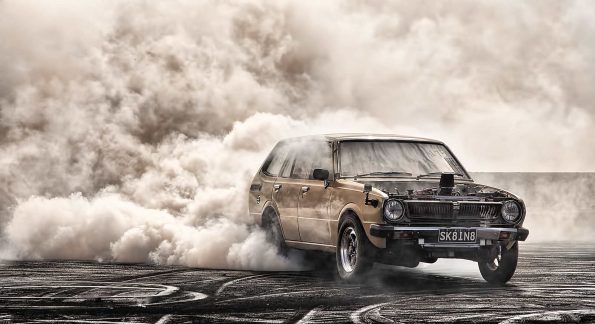
Have you noticed there are far fewer skid marks on roads than there were 10 years ago? This is because of anti-lock brakes and traction control.
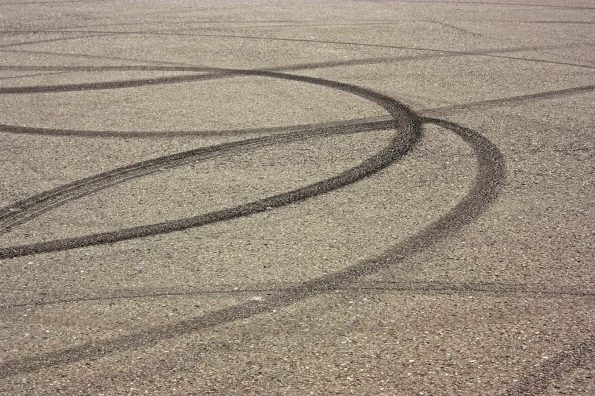
When is traction control useful?
When towing: the extra weight of a trailer means that the wheels have to work harder to provide acceleration
On slippery surfaces: moving away smoothly is more difficult when the surface is really slippery, such as on ice, gravel, snow, wet road markings, wet tarmac and where diesel has been spilled on the road
Uphill: accelerating uphill can break traction more easily, especially if the road is slippery
Tight corners: accelerating out of tight corners can cause the inside wheel to spin.
Does your vehicle have traction control?
Traction control began to be introduced on mainstream vehicles in the late 1980s. It’s now mandatory on all new vehicles as part of an electronic stability control suite of electronics.
You will have a light on your dashboard which will flicker if the traction control activates.
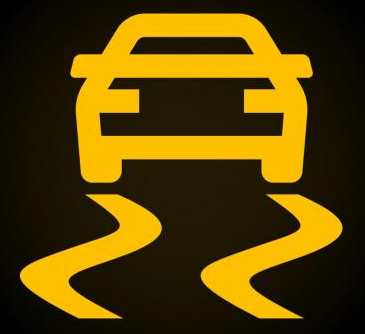
If this light is activating frequently, you are over-driving your vehicle. Slow down until it stops coming on.
There will usually be a button to disable traction control as there are specific circumstances where you might need to spin the wheels (e.g. if you are stuck in snow it can sometimes help).
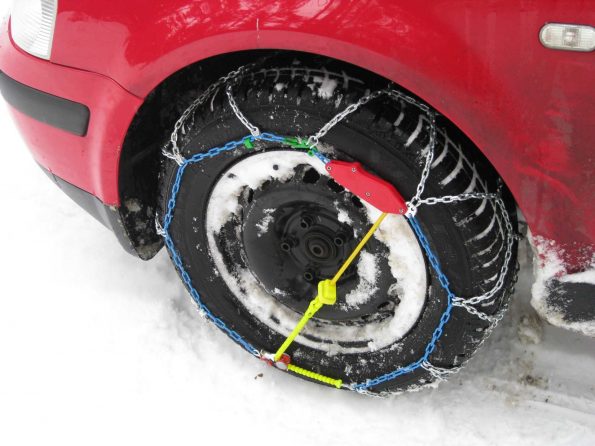
Traction control can be counterproductive in some snow situations
Usually, you would never turn traction control off. The button might also be called ESC, ESP, VSA or another specific acronym used by your vehicle’s manufacturer.
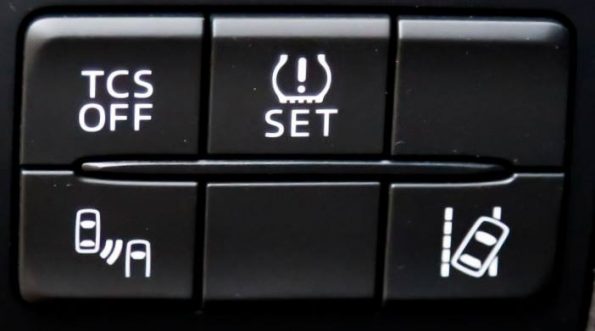
In this vehicle, TCS OFF means traction control system off.
You are much less likely to have traction control on a motorbike or truck, but it is becoming more and more common.
